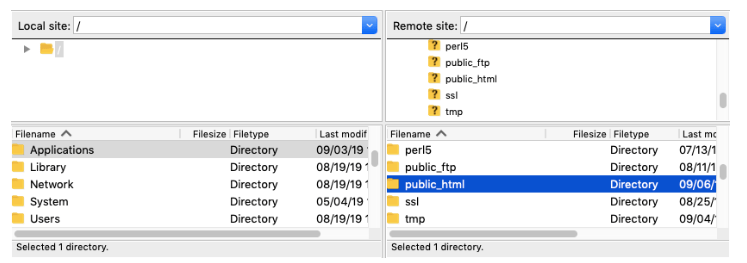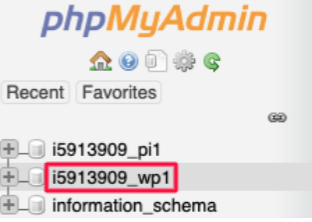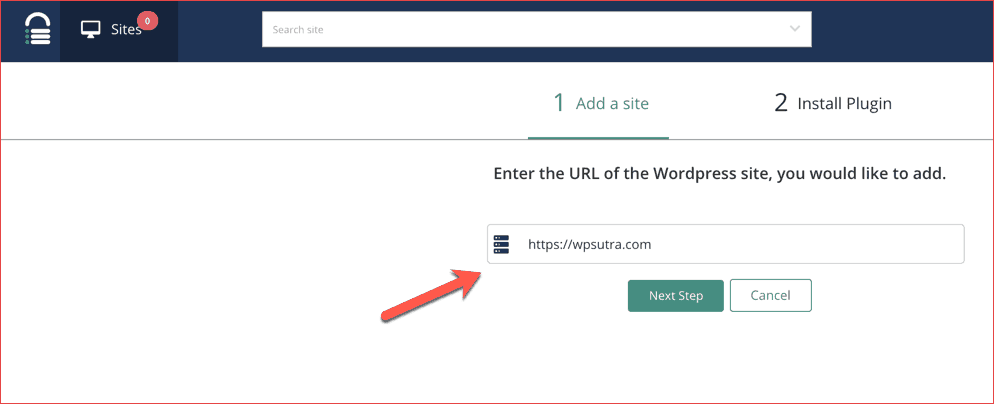This is a guest post, written by Akshat Choudhary, founder of BlogVault.
While designing and launching a WordPress site is easy, maintaining it can be hard work. Anything from a minor coding error to updating/installing a plugin or even changing the theme could cause your entire website to malfunction. Plus, there’s also the constant threat of malware attacks that could send your site out of business in an instant!
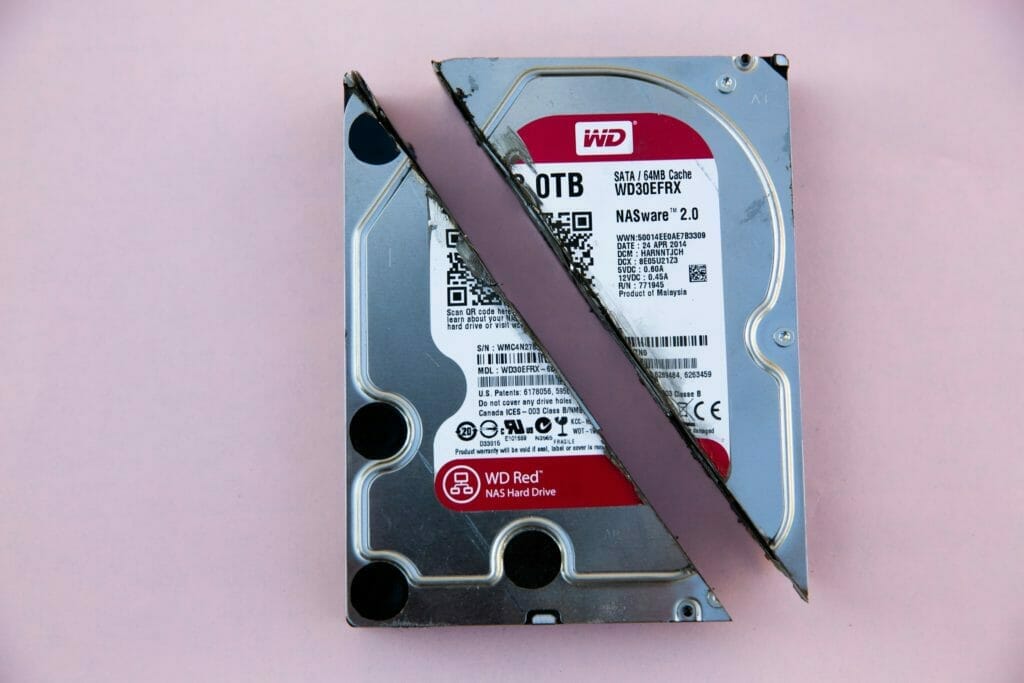
So, how can you make sure your site is always up and running?
It’s simple – have a reliable website backup. A backup is an exact copy of the website and database files stored separately and independent of your web host. If you have a website issue, you can use it to restore your site right back up, without wasting any time.
Ways to Backup Your WordPress Website
This brings us to the next question – how can you back up your website?
There are three common ways you can create WordPress backups:
- Through your web host
- Manual backups
- Using backup plugins
Backup Website via your Web Host
This is a useful option if you’re just starting out when resources and time are both constraints.
Web hosting companies like GoDaddy and WP Engine include backups in their hosting package. This eliminates the need to look for a company that specializes in backups, which saves time and expenses.
Hosting providers like WP Engine allow you to access, download, and restore backups whenever required. Additionally, you can also backup on-demand at any time by logging in to the WP Engine dashboard and selecting the website. Then, from the “Backup Points” section, click the “Backup Now” button to create a fresh backup.

However, here are a few questions to consider when you think about backups provided by your web host.
- How reliable are these backup files? Do they include all website and database data?
- Can they be restored directly without any testing?
- What are the security measures provided by the web host to safeguard backup files from hackers and cyber-criminals?
These are all pertinent questions that bring us to our next backup method.
Manual Website Backups
Compared to backups provided by web hosts, manual backups are more resource-heavy and time-intensive. Plus, you need the technical expertise to execute manual backups. Your WordPress site consists of files and a database, each of which can be backed up using different tools:
- Files require an FTP/SFTP tool like FileZilla
- The database requires the phpMyAdmin tool (or another method to connect directly to the database server)
How to Manually Backup WordPress Files
First, let’s look at how you can take manual backups of WordPress files using an FTP tool like FileZilla. You’ll need your FTP credentials which you can get from your host provider.
- Before beginning the process, create a dedicated backup folder for your WordPress site on your local computer.
- Then, open FileZilla and enter your FTP credentials to connect the FileZilla tool to the web server.
- After establishing the connection, you should be able to see two panels. On the left-hand side called ‘Local site’, you can see the local folders and files (the files on your computer). On the right-hand side called ‘Remote site’, you can see your website directory.

- Under ‘Remote site’, navigate to the ‘public_html’ folder. This folder contains your WordPress website’s files and folders.
- Select all the folder contents, right-click and download them to the designated backup folder on your computer.
- Finally, compress the downloaded folder and store it as a .zip file. (We recommend that you encrypt it with a password as well, for security)
How to Manually Back up Database Files
Next, we look at how to backup your database using the phpMyAdmin tool:
- Log in to your web hosting account and access cPanel.
- Look for a section called ‘Databases’ and then select the phpMyAdmin tool.

- You’ll see a list of your WordPress databases. Click on the ‘Databases’ tab on top or select your database from the left panel.

- This will reveal all the tables on the right side. Select the Export option above the table listing to create the backup.

Pro tip: If you’re having trouble identifying the database, you can find the database name in your wp-config.php file. To download the file, you can use FTP or File Manager in the cPanel of your hosting account. This file contains your database information as shown below.
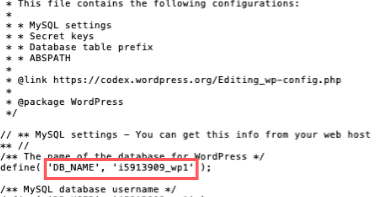
Once we have the website backed up manually, what happens if we need to restore the website?
How to Manually Restore Database Backup Files
Restoring a manual backup is extremely risky as the slightest misstep can break your website. You need to be extra cautious while deleting or overwriting any files. It can be a good idea to take a fresh backup, even if the site is broken. Here are the steps to restore your website using a manual backup copy:
- You will need to connect to FTP the same way you did while taking a backup.
- Unzip your backup copy on your local computer and open that folder on the left-hand (local) panel of FileZilla.
- On the right-hand panel, open the ‘public_html’ folder.
- Now, drag and drop the files and folders from the left side to the right. *or right-click and click Upload.
- You must choose to overwrite all the old files when prompted.
Next, to restore your database, we’ll use the phpMyAdmin tool:
- From your web hosting account, open cPanel > Databases -> MySQL Databases.
- Delete all the tables from your existing database.
- Use the “Import” option and import your database backup.
This method is very nerve wracking and has a high possibility of breaking your site. So if you are not tech-savvy, we strongly recommend using a different method to backup your site.
But backups are critical to the performance and survival of a website and you simply cannot ignore it. Therefore, we recommend using a more reliable and efficient backup solution, one that doesn’t risk ruining your site.
Website Backups with WordPress Plugins
Although manual backups can help you save money, there are simpler solutions – WordPress backup plugins. In this section, we will look at some of the most popular and easy to use ones.
BlogVault
BlogVault is easy to install and use. It gives you access to an independent dashboard to manage all your WordPress sites from a single place. BlogVault only takes a few minutes to backup or restore your entire site, and requires no technical know-how.
Notably, BlogVault has a 100% record in successful website restores.
Some of the other features that stand out are:
- It uses its own servers for all backup activities. This is a big point to consider, as the backup process can sometimes slow down your site.
- Incremental backups which ensure each backup has smaller and manageable chunks of data to not overload your web server.
- Real-time backups that back up all changes instantly, so nothing is missed.
- Built-in features like website staging, website migration, and website management at no additional cost.
UpdraftPlus
UpdraftPlus is another recommended backup plugin and is available with both free and paid versions. Some of the features of the tool are:
- Incremental backups, similar to the BlogVault tool.
- Compatible with WordPress multisite networks.
- Storage on safe and independent cloud storage platforms.
- Features like website cloning and website migration – at no extra cost.
Though UpdraftPlus has a free version, you need to purchase storage on a compatible provider, and the paid version only includes 1GB of storage. You can buy more storage space with them, or use third-party storage like Amazon S3.
BackupBuddy
BackupBuddy performs exceedingly well even on shared web hosts. This popular tool has more than half a million installations and can be easily installed and configured.
Some of its features are:
- Automated backups that are easy to set up and can be scheduled at fixed intervals.
- Backups safely stored on a variety of cloud storage locations.
- An easy backup/restoration process for even novice WordPress users.
However, a significant drawback of this tool is that it does not support on-demand backups. Additionally, most of its essential backup features are only available with paid plans.
Next, we’ll show you how to use a plugin to backup your WordPress site. We picked BlogVault because it’s easy to set up and use (and we love their Malcare and Migrator tools). Almost all the processes can be carried out in single clicks.
Backups can be scheduled and automated making it a good fit for anyone looking to take backups completely off their to-do list.
How to Backup and Restore using the BlogVault Plugin
Here’s how you can perform a backup using BlogVault:
- First, register with BlogVault using your official email address. Then, log in to the dashboard using the link sent to your email address.
- Next, add your website URL address on the “Add a site” page.

- You need to install the BlogVault tool on your site.

We recommend the Automatic install method since it’s really simple. Note: BlogVault does not store your WordPress login credentials. - Once done, BlogVault automatically takes a backup of your website.
Next, we look at how you restore a site using BlogVault:
- On your BlogVault dashboard, select the website you want to restore.
- From the “Site Details” page, click “Restore Site”.

And, you’re done! The Auto Restore is a handy feature that takes all the hassle (and worry!) out of the restoration process.
In Conclusion
For WordPress websites, backups cannot be just an afterthought. If you haven’t already, you must look at a backup strategy that works for your site. While backups from your web host are convenient, make sure you look at all the features, and factor in the reliability of the backups.
Instead, get the job done easily, plus save time and resources by using a backup plugin. Thanks to automation, your site is backed up on time and restoration is a breeze. We highly recommend that you invest in one today – it’s worth your time and peace of mind.
